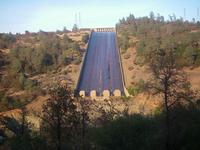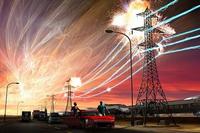-
EU issues new manual for defending ICS against cyberattacks
ENISA, the EU’s cybersecurity agency, has issued a new manual for better mitigating attacks on Industrial Control Systems (ICS). ICS support vital industrial processes primarily in the area of critical information infrastructure such as the energy and chemical transportation industries, where sufficient knowledge is often lacking. As ICS are now often connected to Internet platforms, additional security preparations must be taken. ENISA says that the new guide provides the necessary key considerations for a team charged with ICS Computer Emergency Response Capabilities (ICS-CERC).
-
-
Federal IT spending to exceed $11 billion by 2018
A new report from Delteks, contracted spending on cybersecurity will continue to grow from nearly $9 billion in FY2013 to $11.4 billion in FY2018, driven by multiple initiatives aimed at improving the overall cybersecurity posture of federal agencies. Persistent threats, complex and evolving policy issues, and changing technologies highlight ongoing cyber-workforce shortages to drive investments despite constrained federal IT funding.
-
-
Cybersecurity Manhattan Project needed
On a daily basis, cyberattacks successfully steal U.S. intellectual property and military weapons plans, disrupt banking systems operations, and gain access to personal information which is supposed to be secure. The question: What it will take to harness America’s resources to push the country into developing effective national cyberdefense capabilities? Should it take another 9/11? Experts say that the whole must be greater than the sum of its parts. Power grid cyberattack exercises, increased cyberwarrior staffing at U.S. Cybercom, and the authorization of preemptive cyberattacks by Presidential Policy Directive 20 are individually good steps. But where is the whole? The unifying call to action? The United States may not be able to have another Manhattan Project, but it should be able to develop a Manhattan Project mentality, one which is orchestrated and executed by the U.S. cybersecurity czar or perhaps the DHS.
-
-
Cyber Gym in Israel trains cyber-defenders
A group of IT and infrastructure companies in Israel have teamed up to launch Cyber Gym.The facility, inaugurated this month by Israel Electric Corp. (IEC), will train participants to defend against cyber attacks.When Sivan Shalom, Israel’s Infrastructure and Energy Minister, was asked whether Israel was more concerned about a physical or a virtual attack, he said: “I think the future battle will be in cyberspace.”
-
-
Sea-level rise to drive flooding regardless of changes in hurricane activity
Clamor about whether climate change will cause increasingly destructive tropical storms may be overshadowing a more unrelenting threat to coastal property — sea-level rise — according to a team of researchers. Since 1970, more than 60 percent of all economic losses — about $400 billion — occurred in the North Atlantic, even though it is one of the least active basins for hurricanes.The scientists say accelerated sea-level rise certainly will increase the flooding and property damage triggered by tropical cyclones — commonly known as hurricanes in the Atlantic and Northern Pacific — but predicting where, how often, and how powerful these storms will be when they make landfall is full of uncertainty.
-
-
Feds, Calif. disagree on seismic safety of U.S. tallest dam

At 742 feet, Oroville Dam in Oroville, California is the tallest dam in the United States. It is 45-year old, and federal inspectors say it needs a comprehensive earthquake safety assessment. The California Department of Water Resources (DWR) insists that the dam, which holds 3.5 million acre-feet of water, is safe, and that such an assessment would be an “unjustified expense.” David Gutierrez, chief of California Division of Safety of Dams (DSD), says his agency will decide in January 2014 whether earthquake assessments will be made, but notes: “Oroville is not one that keeps me up at night from a seismic stability standpoint.”
-
-
Virtual wall to build invisible barrier for oil spills
The outer shell of a droplet of oil on a surface has a thin skin which allows it to hold its shape like a small dome; this shell is referred to as the liquid’s surface tension. Now, researchers have developed a technique to form a virtual wall for oily liquids that will help confine them to a certain area, aiding researchers who are studying these complex molecules. This development will have future implications in the guided delivery of oil and effective blockage of oil spreading.
-
-
Humans threaten wetlands' ability to overcome sea level rise
Left to themselves, coastal wetlands can resist rapid sea level rise. The reason: an intricate system of feedbacks which make wetlands remarkably good at building up soils to outpace sea level rise. Humans, however, could be sabotaging some of wetlands’ best defenses, according to results of a new study. The study examines two questions: when do wetlands reach their limit, and how are humans lowering that point?
-
-
Seeds from Moringa oleifera trees better then chemicals for purifying water
Clean water is essential for good health. In many countries it is still difficult to obtain clean water. Even developed countries can benefit from a process that treats waste water without addition of further synthetic chemicals. Seeds from Moringa oleifera trees can be used to purify water. Researchers have discovered that seed material can offer a more efficient purification process than conventional synthetic materials in use today.
-
-
Earthquake early warning? There’s an app for that
Researchers from the University of California have unveiled a smartphone app designed to provide users an early warning of approaching earthquakes. Based on the proximity of the user to the earthquake’s epicenter, the app will provide alerts of between a few seconds and one minute before a tremor hits.
-
-
Better earthquake early-warning system
Geophysicists have developed a new way of calculating the magnitude of an imminent earthquake by making better use of measurements of the compression waves produced early in the event. They say that the technique could be used to create a better early-warning system for earthquakes that could be used worldwide.
-
-
Y-12 security breach update: Old nun awaits sentencing while costs of new Y-12 facility not to be released until 2015
On 28 July 2012, three senior citizens, led by an 83-year old nun, easily breached the supposedly impregnable security systems protecting the Y-12 National Security Complex at Oak Ridge, Tennessee. The three peace activists wondered the grounds of the maximum security facility for a while before being noticed by security personnel. While the three aging protesters are awaiting sentencing, the two companies — Bechtel Corporation and Babcock and Wilcox – which were responsible for designing and implementing security at Y-12, have been named as the primary construction contractors for planning and design of the new uranium processing facility (UPF) to be built at Y-12.
-
-
Early warning system to detect abrupt climate change impacts
Climate change has increased concern over possible large and rapid changes in the physical climate system, which includes the Earth’s atmosphere, land surfaces, and oceans. Some of these changes could occur within a few decades or even years, leaving little time for society and ecosystems to adapt. A new report from the National Research Council states that even steady, gradual change in the physical climate system can have abrupt impacts elsewhere — in human infrastructure and ecosystems for example — if critical thresholds are crossed. The report calls for the development of an early warning system that could help society better anticipate sudden changes and emerging impacts.
-
-
Key to protecting Earth from asteroids: time

Scientists say that humanity can address the threats from asteroids of any size if given enough time and notice of the asteroid’s existence and trajectory. Even an asteroid the size of the 10-kilometer-wide space rock which scientists hold responsible for the extinction of dinosaurs sixty-five million years ago, can be destroyed, although it would take hitting the asteroid with multiple spacecrafts over a period of several decades.
-
-
Defending against electromagnetic-pulse attacks

We are all familiar with the power of electromagnetic attacks from the movies: in “Ocean’s Eleven,” George Clooney’s gang disables Las Vegas’ power grid, and Keanu Reeves’ henchmen hold off the enemy robot fighters from their spaceship in the “Matrix Trilogy.” The heroes in the films succeed by sending out a very strong electromagnetic pulse, which changes the voltage in the vicinity so that regulators, switches, and circuit boards in electronic equipment go crazy. Researchers are now trying to figure out how such attacks can be detected. They have developed a measurement instrument for this purpose that is capable of determining the strength, frequency, and direction of electromagnetic attacks.
-
More headlines
The long view
Water Wars: A Historic Agreement Between Mexico and US Is Ramping Up Border Tension
As climate change drives rising temperatures and changes in rainfall, Mexico and the US are in the middle of a conflict over water, putting an additional strain on their relationship. Partly due to constant droughts, Mexico has struggled to maintain its water deliveries for much of the last 25 years, deliveries to which it is obligated by a 1944 water-sharing agreement between the two countries.
Trump Is Fast-Tracking New Coal Mines — Even When They Don’t Make Economic Sense
In Appalachian Tennessee, mines shut down and couldn’t pay their debts. Now a new one is opening under the guise of an “energy emergency.”
Smaller Nuclear Reactors Spark Renewed Interest in a Once-Shunned Energy Source
In the past two years, half the states have taken action to promote nuclear power, from creating nuclear task forces to integrating nuclear into long-term energy plans.
Keeping the Lights on with Nuclear Waste: Radiochemistry Transforms Nuclear Waste into Strategic Materials
How UNLV radiochemistry is pioneering the future of energy in the Southwest by salvaging strategic materials from nuclear dumps –and making it safe.
Model Predicts Long-Term Effects of Nuclear Waste on Underground Disposal Systems
The simulations matched results from an underground lab experiment in Switzerland, suggesting modeling could be used to validate the safety of nuclear disposal sites.
